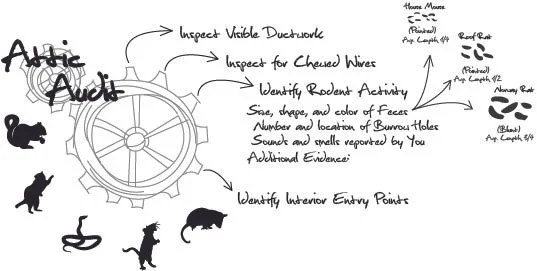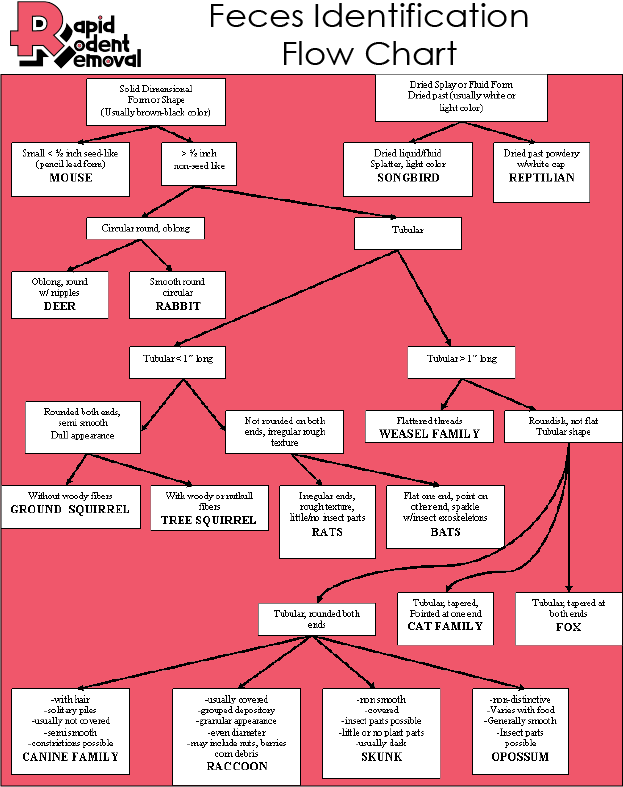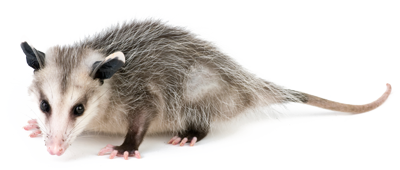What do Mice eat
WHAT DO MICE EAT ?
Mice are some of the most widespread mammals on Earth. From wild forests to city apartments, they have an extraordinary ability to adapt—and at the heart of that adaptability is their diverse and opportunistic diet. Understanding what mice eat is not just a question of curiosity; it's a critical factor in rodent control, pet care, scientific research, and even public health.
Mice are omnivores, which means they eat a mix of plants and animal products. However, their specific diet can vary greatly depending on their environment, species, availability of food sources, and even the time of year. A field mouse in the wild may rely on seeds and insects, while a house mouse in an urban kitchen might raid pantries and nibble on pasta or cereal.
For homeowners and pest control professionals, knowing what attracts mice can be the difference between a secure home and an infestation. Mice are constantly on the hunt for food, and their sharp sense of smell allows them to sniff out even the smallest crumbs. Knowing the types of food they prefer can help you remove attractants and design effective traps or deterrents.
For pet owners, providing a balanced and safe diet is essential for the health and well-being of domesticated mice. Pet mice have different nutritional needs than their wild cousins, and not every human food is safe for them. Understanding what’s healthy, what’s risky, and what stimulates natural foraging behaviors can help improve their quality of life.
For researchers and scientists, understanding mouse nutrition is also foundational. Lab mice are used in countless experiments around the world, and their diets must be meticulously controlled to avoid skewing results. Even slight variations in nutritional intake can affect behavior, reproduction, and longevity.
Then there's the broader ecological impact. Mice play key roles in ecosystems—as seed dispersers, as prey for predators, and sometimes as agricultural pests. Their dietary habits influence plant distribution, food webs, and even the success of certain crops. Thus, understanding what mice eat contributes to fields as diverse as ecology, biology, public health, and environmental science.
Perhaps most importantly, understanding a mouse’s diet gives us insight into how they live and survive. Mice are survivors. Their ability to thrive in nearly every environment is due in large part to their flexible, varied, and ingenious eating habits. From chewing through drywall to get to a loaf of bread, to caching seeds for the winter, mice demonstrate extraordinary adaptability through their food-seeking behavior.
This book will walk you through the fascinating world of mouse diets, one chapter at a time—from the forest floor to your kitchen cupboard, and from the pet store to the science lab. Whether you’re a homeowner, a rodent enthusiast, a pest control expert, or simply curious, this comprehensive guide will help you understand not only what mice eat, but why they eat it—and what you can do with that knowledge.
📖 What Do Mice Eat? A Complete Guide to the Diet of Mice in the Wild and at Home
The Natural Diet of Wild Mice
Wild mice live in diverse ecosystems ranging from forests and grasslands to deserts and agricultural fields. To survive, they rely on a foraging strategy that balances nutrition, availability, and safety. Unlike pet or lab mice, wild mice must constantly adapt to what nature provides—seasonally and regionally.
Seed Lovers at Heart
Seeds form the staple of many wild mice diets. Grains from grasses, trees, and flowering plants are packed with carbohydrates and protein. Mice especially favor seeds that are easy to carry and store. Acorns, sunflower seeds, and wheat kernels are often targeted in agricultural zones.
Fruits and Berries
Where available, mice consume fruits and berries for their high sugar and water content. This includes wild berries like blackberries and elderberries. These provide energy and hydration, especially in summer and autumn.
Insects and Small Invertebrates
Wild mice are opportunistic omnivores and often consume beetles, caterpillars, snails, or worms. These protein sources are vital, especially during breeding seasons when females need more nutrition.
Roots, Tubers, and Greens
Some field and meadow mice will gnaw on roots and soft plant stems. In drier climates or times of scarcity, they may resort to chewing bark or tree seedlings.
Fungi and Mushrooms
In forested regions, mice may eat small mushrooms and fungi. These are seasonal but nutrient-rich supplements to their diet.
Foraging Habits
Mice forage mostly at night (nocturnal) and stay near cover to avoid predators. They may cache food near burrows for winter or lean times.
Mice Diet
What House Mice Eat Indoors
House mice (Mus musculus) are among the most adaptable rodent species. Indoors, their diet shifts drastically from nature’s offerings to human-sourced food.
Pantry Pests
House mice will raid pantries for cereal grains, crackers, bread, and rice. They gnaw through plastic and cardboard with ease and can climb shelves to reach sealed bags.
Sugar and Fat Cravings
Greasy leftovers and sugary snacks are highly attractive. Peanut butter, chocolate, cookies, and even pet food become common targets. Their acute sense of smell guides them to crumbs or residue invisible to us.
Trash and Compost
House mice will scavenge in garbage bins, compost piles, and under appliances. They consume spoiled food, fruit peels, vegetable scraps, and even used paper towels if food residue is present.
Pet Food Theft
Mice often steal from cat and dog bowls, especially if they’re left out overnight. Kibble provides concentrated nutrition and is easy to transport and hoard.
Non-Food Chewing
While not technically “eaten,” mice chew on electrical wires, soap bars, candles, and cardboard for nesting or dental maintenance, sometimes ingesting harmful materials by accident.
Urban Mice vs. Rural Mice: Dietary Differences
Environmental setting shapes mouse diets significantly.
Urban Mice
These mice live in cities, apartment buildings, and industrial zones. Their diets are rich in processed foods, garbage, fast food leftovers, and pet food. They benefit from warmth, shelter, and consistent food supply—but are at higher risk of consuming toxic materials or rodenticides.
Rural Mice
Rural mice forage in barns, crop fields, and forests. They eat more natural foods—grains, seeds, insects—but face predators and food scarcity. Farm equipment sheds and grain silos provide a hybrid environment of wild and human-supplied food.
Behavioral Impact
Urban mice may develop bolder behaviors and stronger preferences for sugar and fat. Rural mice maintain more traditional foraging habits and are likely to cache food more frequently.
What Pet Mice Should Eat: A Caretaker’s Guide
Pet mice have different nutritional needs and should be fed a diet tailored for health and longevity.
Pellet-Based Diets
Commercially available lab blocks or mouse/rat pellets are formulated to provide balanced nutrition. These should form the core of the diet.
Fresh Vegetables
Carrots, broccoli, spinach, peas, and cucumbers are great supplements. Leafy greens should be washed and served in small portions.
Fruits in Moderation
Apples (without seeds), bananas, strawberries, and melon are fine treats. Too much sugar can lead to obesity and diabetes in pet mice.
Safe Proteins
Small portions of cooked egg, tofu, or plain chicken can be offered. High-protein foods support healthy coat and muscle development.
Foods to Avoid
Never feed chocolate, caffeine, alcohol, onions, garlic, raw beans, or moldy food. These are toxic and can be fatal.
Enrichment Feeding
Scattering food, hiding treats, or using puzzles helps encourage foraging behaviors and prevents boredom.
Foods That Are Dangerous or Toxic to Mice
Some human foods and common household items are deadly to mice.
High-Toxicity Items
Chocolate (contains theobromine)
Alcohol (rapid liver damage)
Onions and garlic (can destroy red blood cells)
Coffee and tea (caffeine toxicity)
Raw beans (contain lectins)
Spoiled or Moldy Food
Even foods that are normally safe can become dangerous when moldy. Mycotoxins can cause liver failure and neurological issues in mice.
Salty or Processed Snacks
Chips, pretzels, and cured meats contain excessive sodium and preservatives.
Artificial Sweeteners
Xylitol and aspartame can be harmful, even in small quantities.
Household Hazards
Soap, detergent, glue traps, and pesticides may be ingested when mice chew to explore. Many rodenticides are designed to be tempting—but lethal.
How Mice Forage and Find Food
Mice use keen senses and learned behavior to locate food.
Olfactory Dominance
Mice have an excellent sense of smell. They follow scent trails, detect crumbs, and assess the safety of potential food by smell alone.
Taste and Texture
They sample food cautiously at first, avoiding strong bitter or spicy flavors. They often prefer soft textures but chew through nearly anything.
Memory and Learning
Mice have spatial memory and can remember locations of food or danger. They often revisit known food sources and may build trails.
Scent Trails and Urine Marking
Mice mark paths with scent for navigation and communication with other mice.
Seasonal Changes in Mice Diets
Seasons affect food availability and foraging patterns.
Spring and Summer
Abundant food: fruits, insects, seeds, flowers. Breeding increases, and so does food intake. Mice are more active and adventurous.
Autumn
A time of hoarding. Mice gather seeds, grains, and nuts to store in nests. They build fat reserves for winter.
Winter
Wild mice rely on stored food. House mice increase in number indoors due to warmth and food access. Diet becomes more human-based—pantries, pet food, and garbage.
The Role of Smell and Taste in Food Selection
Mice heavily rely on olfactory cues to determine food quality.
Scent Sensitivity
Mice can detect food from several feet away and identify nutritional content by scent. They use Jacobson’s organ to detect pheromones and chemical signals.
Taste Preferences
They prefer sweet and fatty flavors. Bitterness often signals toxicity, so they avoid it instinctively. Salt is tolerated but not sought after.
Selective Sampling
Mice nibble small amounts at first. If the food causes no distress, they consume more later or recommend it (by scent trail) to others.
How a Mouse’s Diet Affects Its Health and Behavior
Nutrition shapes physical and mental health.
Growth and Reproduction
Protein-rich diets accelerate growth, sexual maturity, and litter size. Malnourished mice reproduce less.
Immune System
Vitamins A, C, and E boost immune response. Lack of nutrients leads to poor coat condition, lethargy, and illness.
Behavior and Activity
Sugar spikes energy but can cause hyperactivity or obesity. Starved mice become aggressive and desperate.
Lifespan
Well-fed lab mice may live 2+ years. Wild mice with unstable food access often live under a year.
How Mice Store and Hoard Food
Mice are hoarders by nature, especially in preparation for winter or scarcity.
Cache Locations
Inside walls, behind appliances, under floorboards, and in nest sites.
What They Store
Grains, seeds, dry pasta, kibble, and even wrappers or nesting material.
Hoarding Behavior
Mice carry food back to nests in their mouths or cheeks. They hide it and revisit it over days or weeks.
Signs You Have a Mouse Hoard
Missing dry food, strange piles in corners, chew marks on packaging, or odd food in places like drawers or closets.
Rodent-Attracting Foods in Your Home
Knowing what attracts mice can help you prevent infestations.
High-Risk Foods
Peanut butter
Bird seed
Pet food
Bread and crackers
Rice, oats, grains
Candy, cookies, sugar spills
Storage Mistakes
Leaving food in cardboard boxes or unsealed containers invites mice. Open trash cans or compost bins are highly attractive.
Appliance Areas
Food spills under stoves or refrigerators often go unnoticed by humans but attract mice quickly.
Pet Feeding Areas
Uneaten kibble or water bowls near the floor become magnets for mice, especially at night.
All About Animals …
Suspendisse nec congue purus. Aenean eu justo sed elit dignissim aliquam. Suspendisse nec congue purus. Class aptent taciti sociosqu ad litora torquent per conubia nostra, per inceptos himenaeos.
RATS
SQUIRRELS
RACCOONS
OPOSSUMS
SNAKES
BATS
WILDLIFE REMOVAL
articles:
What does a rat nest look like ?
What is a Squirrel King









